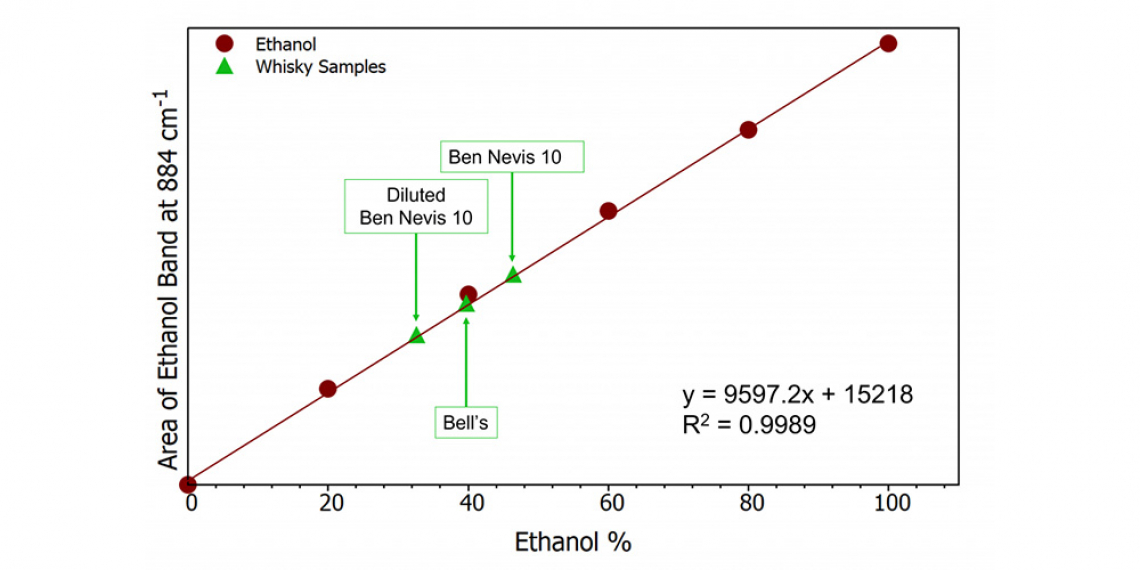
Whisky is made from fermented grain mash, with different grains used to provide the wide variety of whisky flavours available. When bottles of whisky are sold, they will contain a % abv, this relates to how much ethanol is present in the bottle. Commonly, whisky is 40 % abv, thus 40 % of the bottle should be ethanol. Whisky is an increasingly popular drink, with the Scotch Whisky Association stating 44 bottles of Scotch Whisky are exported every second, with exports worth £4.5 bn in 2021.
Fraudulent sales of drinking alcohol, especially spirits, is a concerning and potentially dangerous way in which vendors try to increase their profits. There are two common ways in which alcohol is sold illegally, first, is the sale of watered down alcohol. This is either done in bulk, where bottles are sold with fraudulent % abvs printed on them, or in bars where spirits are diluted after wholesale purchase. The second issue seen in alcohol fraud is more sinister where methanol, which is toxic to humans, is used in spirits, instead of ethanol.
This application note details how Raman spectroscopy can offer quantitative and qualitative analysis of whisky samples.

